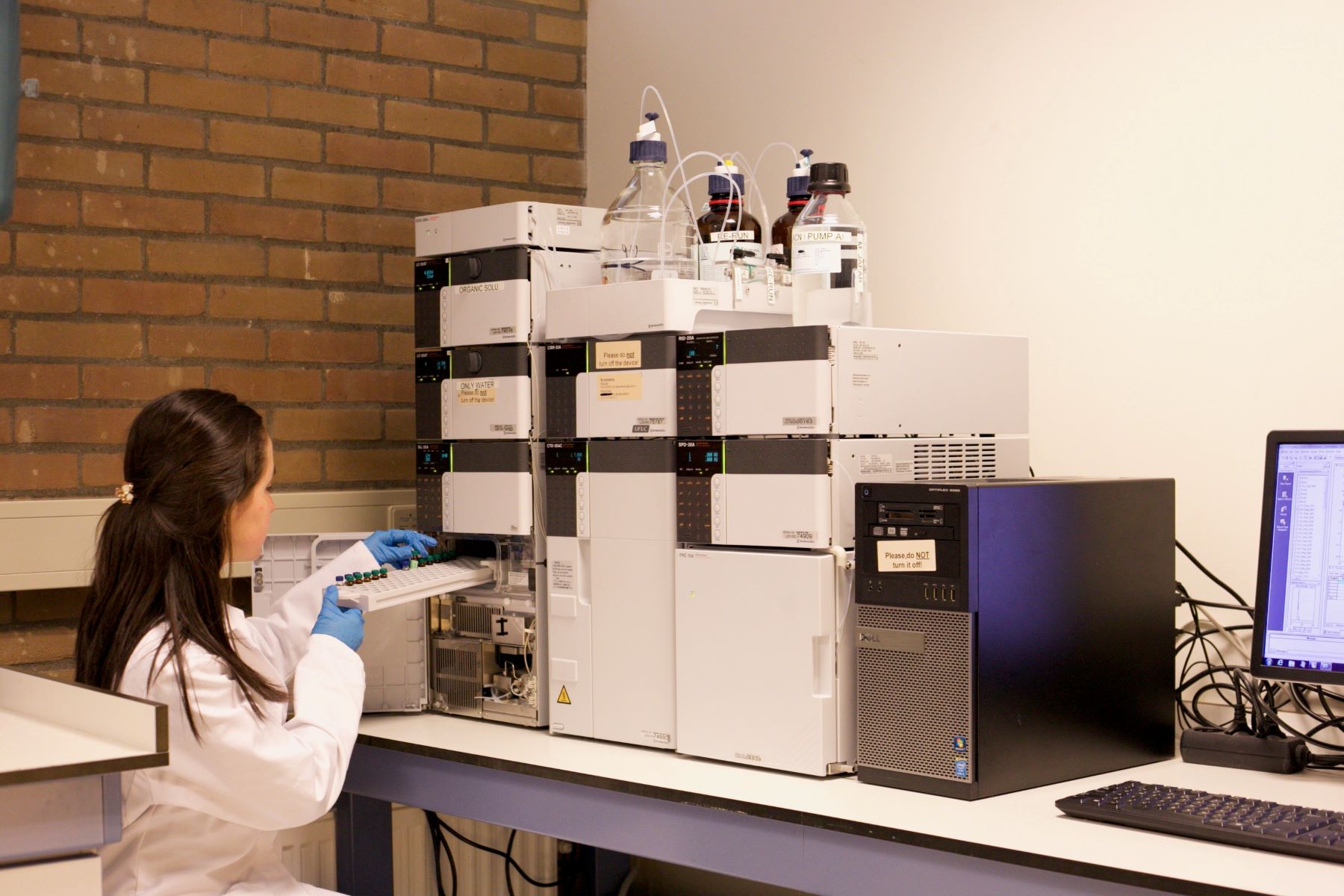
High-Performance Liquid Chromatography (HPLC) is a powerful tool in the world of chemistry and biology. But what makes it so special? HPLC separates, identifies, and quantifies components in a mixture, making it invaluable for research and industry. Imagine needing to find a needle in a haystack; HPLC does just that but with molecules. It's used in pharmaceuticals, environmental testing, and even food safety. Ever wondered how your medicine is so pure? HPLC plays a big role. Curious about how pollutants are detected in water? HPLC is on the case. Ready to dive into the fascinating world of HPLC? Let's explore 38 intriguing facts that will make you appreciate this incredible technology even more.
What is High-Performance Liquid Chromatography (HPLC)?
High-Performance Liquid Chromatography, or HPLC, is a powerful technique used in analytical chemistry. It helps separate, identify, and quantify components in a mixture. Here are some fascinating facts about HPLC.
-
HPLC stands for High-Performance Liquid Chromatography. This technique is also known as High-Pressure Liquid Chromatography due to the high pressure used to push the liquid through the column.
-
Developed in the 1960s. HPLC was developed in the 1960s to improve the separation capabilities of traditional liquid chromatography.
-
Uses a liquid mobile phase. Unlike gas chromatography, HPLC uses a liquid mobile phase to transport the sample mixture through the column.
-
Columns are packed with small particles. The columns in HPLC are packed with small particles that help separate the components of the mixture.
-
High pressure is essential. High pressure, often up to 400 bar, is used to push the liquid through the column, ensuring efficient separation.
How Does HPLC Work?
Understanding the working mechanism of HPLC can help appreciate its importance in various fields. Let's dive into the process.
-
Sample injection. The sample mixture is injected into the HPLC system using a syringe or an autosampler.
-
Mobile phase carries the sample. The liquid mobile phase carries the sample through the column.
-
Separation in the column. As the sample passes through the column, its components separate based on their interactions with the stationary phase.
-
Detection of separated components. A detector at the end of the column identifies and quantifies the separated components.
-
Data analysis. The data collected by the detector is analyzed using specialized software to determine the concentration of each component.
Applications of HPLC
HPLC has a wide range of applications in various industries. Here are some key areas where HPLC is used.
-
Pharmaceutical industry. HPLC is widely used in the pharmaceutical industry for drug development, quality control, and stability testing.
-
Food and beverage industry. It helps ensure the safety and quality of food and beverages by detecting contaminants and verifying ingredient concentrations.
-
Environmental analysis. HPLC is used to monitor pollutants in water, soil, and air samples.
-
Clinical diagnostics. It aids in diagnosing diseases by analyzing biological samples like blood and urine.
-
Forensic science. HPLC helps identify and quantify substances in forensic samples, such as drugs and toxins.
Types of HPLC
There are several types of HPLC, each with its unique features and applications. Let's explore some of them.
-
Normal-phase HPLC. This type uses a polar stationary phase and a non-polar mobile phase, separating components based on their polarity.
-
Reverse-phase HPLC. The most common type, it uses a non-polar stationary phase and a polar mobile phase, separating components based on their hydrophobicity.
-
Size-exclusion HPLC. Also known as gel permeation chromatography, it separates components based on their size.
-
Ion-exchange HPLC. This type separates components based on their charge by using a charged stationary phase.
-
Affinity HPLC. It uses a stationary phase with specific binding sites to separate components based on their biological interactions.
Advantages of HPLC
HPLC offers several advantages over other analytical techniques. Here are some key benefits.
-
High resolution. HPLC provides high-resolution separation of complex mixtures.
-
Speed. The technique is relatively fast, allowing for quick analysis of samples.
-
Sensitivity. HPLC can detect and quantify components at very low concentrations.
-
Versatility. It can be used to analyze a wide range of samples, from small molecules to large biomolecules.
-
Automation. Modern HPLC systems are highly automated, reducing the need for manual intervention.
Challenges and Limitations of HPLC
Despite its many advantages, HPLC also has some challenges and limitations. Let's take a look at a few.
-
High cost. HPLC equipment and maintenance can be expensive.
-
Complexity. The technique requires skilled operators and specialized training.
-
Sample preparation. Some samples require extensive preparation before analysis.
-
Limited column life. HPLC columns have a limited lifespan and need to be replaced periodically.
-
Solvent disposal. The disposal of organic solvents used in HPLC can be environmentally challenging.
Innovations in HPLC
Recent innovations have improved the performance and capabilities of HPLC. Here are some noteworthy advancements.
-
Ultra-High-Performance Liquid Chromatography (UHPLC). UHPLC operates at even higher pressures than HPLC, providing faster and more efficient separations.
-
Micro and nano HPLC. These techniques use smaller columns and lower flow rates, reducing solvent consumption and improving sensitivity.
-
Green HPLC. Efforts are being made to develop more environmentally friendly HPLC methods by using less toxic solvents and reducing waste.
-
Multidimensional HPLC. This technique combines multiple HPLC methods to achieve better separation of complex mixtures.
-
Advanced detectors. New detectors, such as mass spectrometers, provide more detailed information about the separated components.
Future of HPLC
The future of HPLC looks promising, with ongoing research and development. Here are some trends to watch.
-
Integration with other techniques. Combining HPLC with other analytical techniques, like mass spectrometry, will enhance its capabilities.
-
Improved software. Advances in data analysis software will make it easier to interpret complex HPLC data.
-
Personalized medicine. HPLC will play a crucial role in developing personalized medicine by analyzing individual patient samples.
Final Thoughts on HPLC
High-Performance Liquid Chromatography (HPLC) stands as a cornerstone in analytical chemistry. Its precision and versatility make it indispensable for various industries, from pharmaceuticals to environmental testing. Understanding the key facts about HPLC, like its ability to separate, identify, and quantify compounds, can deepen your appreciation for this powerful technique. Whether you're a student, researcher, or industry professional, knowing these details can enhance your work and studies. HPLC's role in ensuring product quality and safety cannot be overstated. As technology advances, HPLC continues to evolve, offering even more accurate and efficient solutions. So, next time you encounter HPLC in your work or studies, remember these essential facts. They might just give you the edge you need to excel.
Was this page helpful?
Our commitment to delivering trustworthy and engaging content is at the heart of what we do. Each fact on our site is contributed by real users like you, bringing a wealth of diverse insights and information. To ensure the highest standards of accuracy and reliability, our dedicated editors meticulously review each submission. This process guarantees that the facts we share are not only fascinating but also credible. Trust in our commitment to quality and authenticity as you explore and learn with us.


